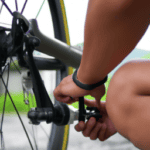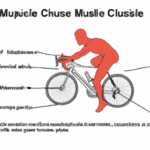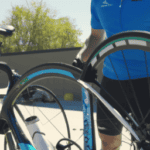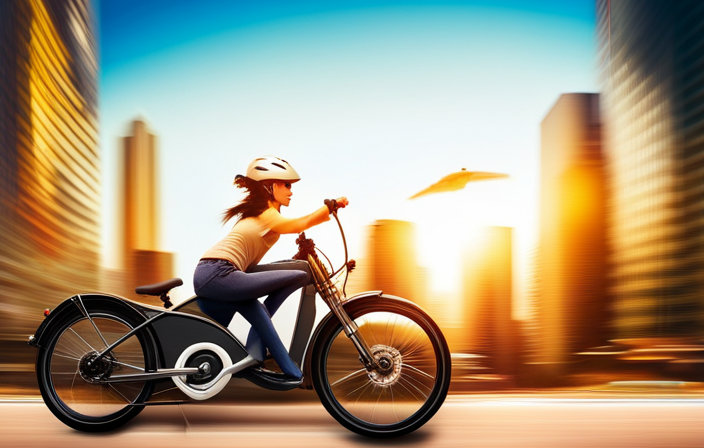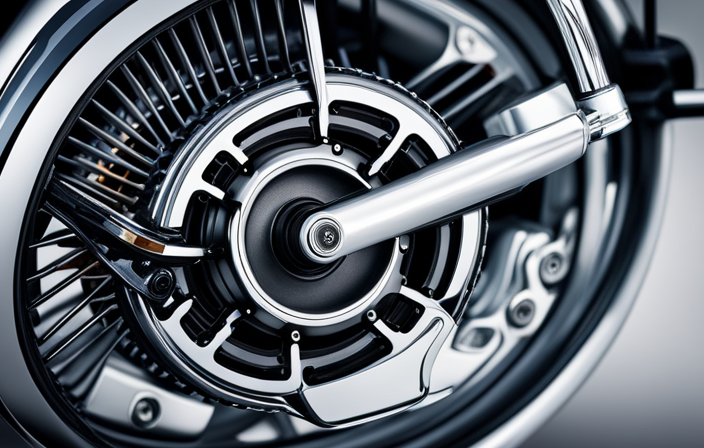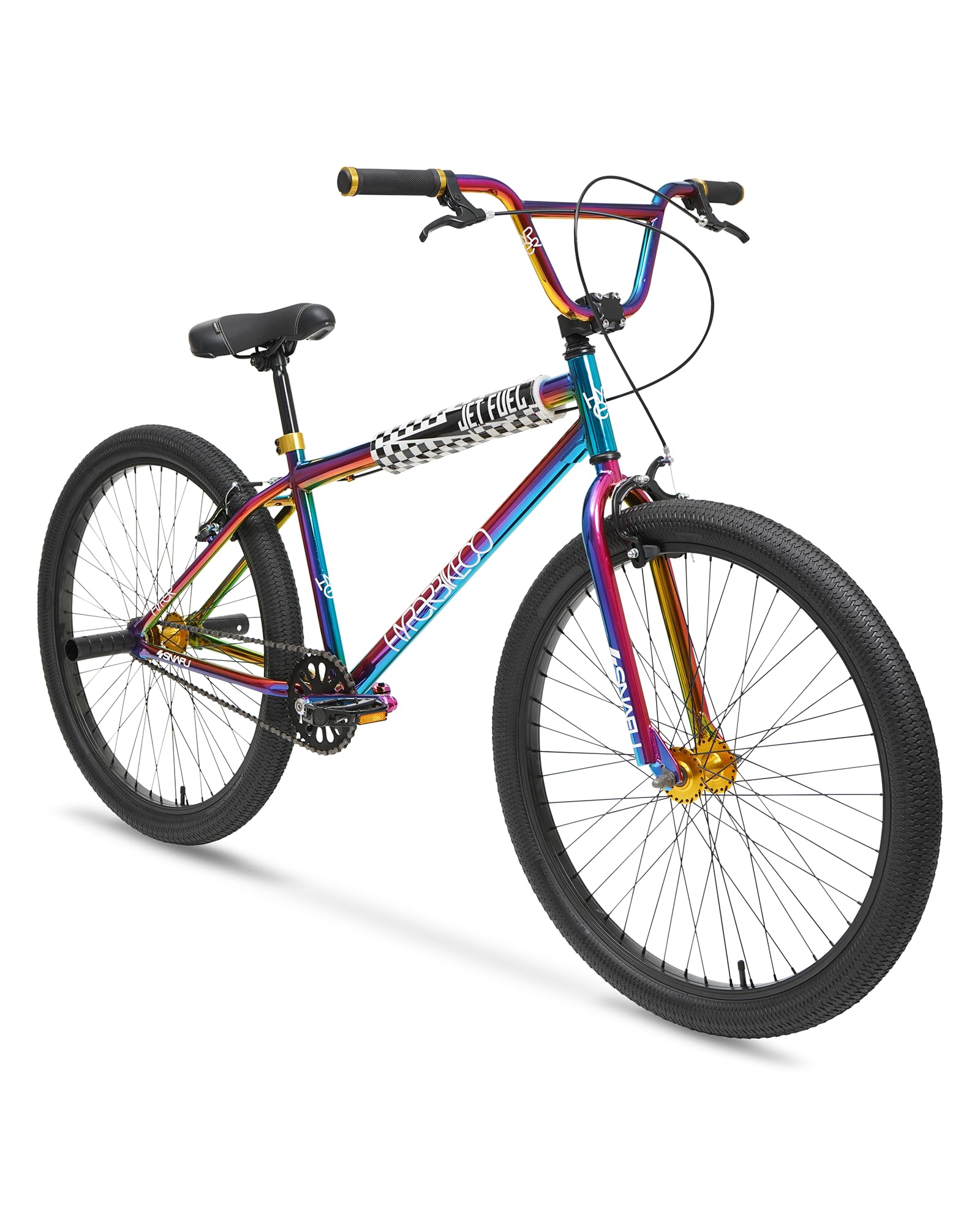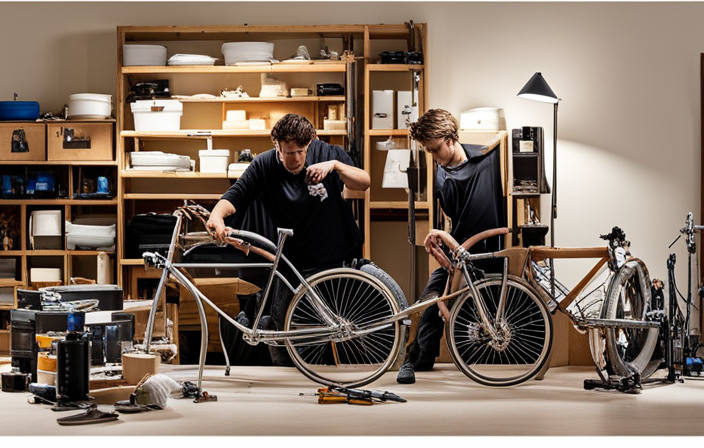Beginners Guides
10 Steps to Use Your Bicycle for Spin Workouts
Immerse yourself in the ultimate guide to transforming your bike for spin workouts and unleash your full cycling potential.

Let's pedal back in time to uncover the essential steps in utilizing your bicycle for spin workouts.
From optimizing bike fit to mastering pedaling techniques, each step plays a vital role in maximizing your workout potential.
Discover how to fine-tune your setup and elevate your spin sessions with precision and efficiency.
Whether you're a beginner or a seasoned cyclist, these steps can revolutionize your approach to indoor cycling.
Key Takeaways
- Properly adjust bike setup and techniques for optimal alignment and injury prevention.
- Incorporate warm-up and cool down routines with dynamic stretches and hydration for recovery.
- Utilize interval training and progress tracking tools to enhance performance and measure fitness goals.
- Engage in hill climb simulations and sprint challenges to improve endurance and muscle strength.
Bike Setup
When setting up your bike for a spin workout, ensure that the seat height is adjusted so that your leg is almost fully extended at the bottom of the pedal stroke. This adjustment is crucial to prevent knee strain and ensure maximum power output.
Next, focus on the handlebar position. Set them at a height that allows you to maintain a neutral spine position, promoting better posture and reducing the risk of back pain.
When aligning the pedals, make sure they're level and comfortable for your feet. Check that your knee has a slight bend of about 25 to 35 degrees during the downstroke to optimize pedal efficiency.
Proper seat height, handlebar position, and pedal alignment are fundamental for a successful spin workout. By fine-tuning these settings, you'll not only enhance your performance but also prevent injuries and discomfort.
Warm-Up Routine

Let's kick off our spin workout with a dynamic 5-10 minute warm-up routine to get our hearts pumping and muscles primed for the ride ahead. Here's how to make the most of your warm-up:
- Pedal Away: Start by pedaling at a moderate pace, gradually increasing your resistance and speed to mimic the intensity of the main workout. Feel the burn in your legs and the rhythm of the ride as you prepare for what's to come.
- Dynamic Stretches: Incorporate dynamic stretches like leg swings and arm circles to loosen up your muscles and joints. This will help prevent injury and ensure your body is ready for the indoor cycling session ahead.
- Focus and Goal Setting: Use this time to focus your mind and set specific goals for your spin workout. Visualize yourself conquering challenging hills and sprinting towards the finish line. Stay motivated and push yourself to new limits.
Get ready to crush your indoor cycling session by nailing your warm-up routine. Let's set the tone for an epic ride!
Interval Training
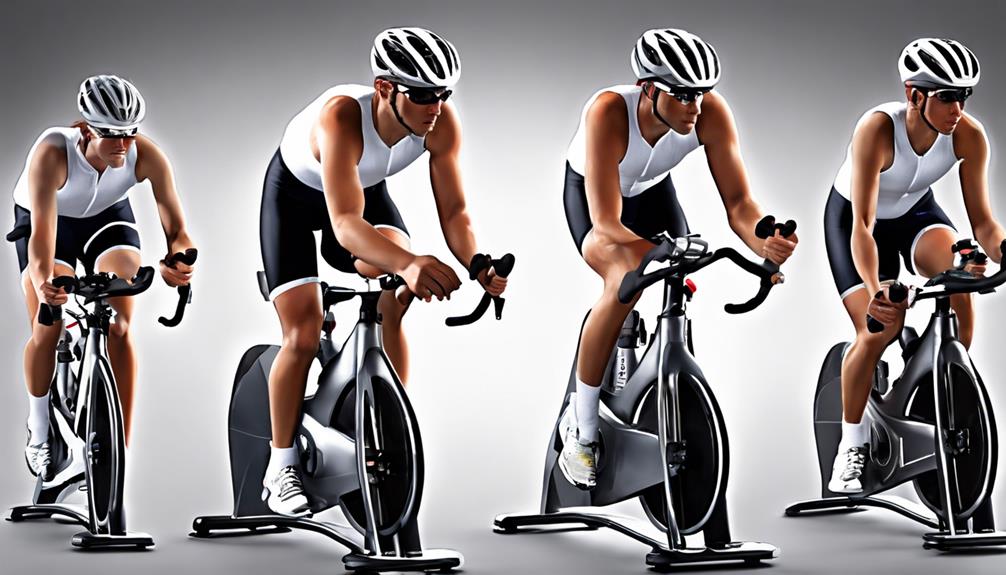
Interval training on your spin bike offers a range of benefits. It can boost your cardio fitness, torch calories, and enhance endurance. Tailoring the durations of intervals to your specific needs is key. Efficiently monitoring your progress is also important to track improvements over time.
Benefits of Intervals
Engage in interval training on your bike to unlock a myriad of benefits that can elevate your cardiovascular fitness, endurance, and calorie-burning potential.
- Boost Performance: Alternating between intense bursts and recovery periods helps enhance speed, power, and overall biking performance.
- Break Plateaus: Intervals keep your exercise bike sessions dynamic, preventing workout plateaus and banishing boredom.
- Maximize Results: By incorporating intervals, you'll efficiently torch calories, enhance fat loss, and enjoy metabolic benefits that steady-state cardio mightn't provide.
Always keep pushing yourself on the exercise bike, ensuring your legs are fully extended for optimal power and efficiency. Interval training is your ticket to a challenging, effective, and exhilarating spin workout that propels you towards your fitness goals.
Setting Interval Durations
To optimize your spin workout, tailor your interval durations to match your fitness level and goals, ensuring a balance between high-intensity efforts and strategic recovery periods.
Determine intervals like 30 seconds of high intensity followed by 1 minute of recovery, adjusting as needed. Beginners should start with shorter durations and gradually increase.
Use timers or apps for accurate tracking and experiment with various lengths and intensities to keep challenging yourself. Don't forget to adjust the bike's resistance to align with each interval's intensity, finding that sweet spot between pushing hard and allowing for proper recovery.
Embrace the freedom to customize your intervals, keeping your workouts dynamic and effective. Remember, progress comes from pushing boundaries and embracing change.
Tracking Progress Efficiently
Opt for a heart rate monitor or fitness tracker to effectively monitor intensity levels during your interval training sessions on the spin bike. Tracking progress efficiently is key to achieving your fitness goals.
Here's how to do it:
- Monitor your heart rate to ensure you're hitting the desired intensity levels.
- Keep an eye on your cadence (RPM) and resistance levels to gauge improvement and push yourself further.
- Record your workout duration and intensity to track your endurance and performance gains over time.
Resistance Adjustment

Adjusting the resistance on your spin bike is key to customizing your workout intensity and maximizing your training effectiveness. By turning the resistance knob, you can dial up the challenge or dial it down according to your goals and energy levels. Higher resistance levels mimic tough uphill climbs, activating more muscles and ramping up the intensity.
On the other hand, lower resistance is perfect for warm-ups or cool-downs, allowing your muscles to ease into or out of the session. As you progress in strength and endurance, gradually increase the resistance to keep pushing your limits and experiencing growth. Remember to find a resistance level that lets you maintain proper form and pedal smoothly throughout the entire workout.
Don't be afraid to experiment with different resistance settings to keep your routine fresh, engaging various muscle groups and intensifying your spin sessions. Embrace the freedom to tailor your workout to suit your needs and enjoy the empowering sensation of taking charge of your fitness journey.
Pedaling Techniques
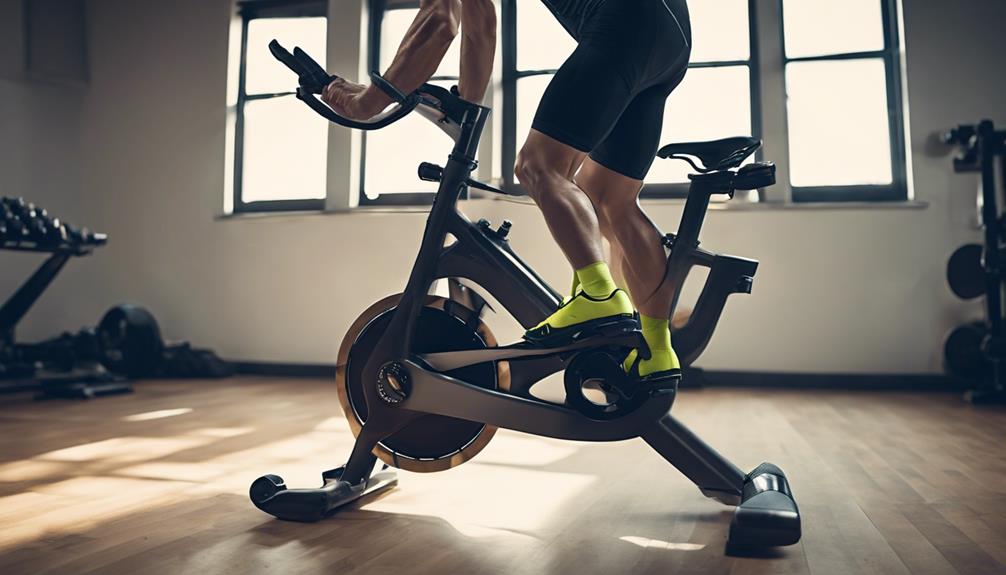
Engage various muscle groups effectively by focusing on pushing down and pulling up on the pedals during your spin workouts. To make the most of your pedaling techniques, remember the following:
- Push Down with Power: Imagine pushing through the pedal stroke as if you're conquering a challenging climb. Feel the strength in your legs as you engage your quads and calves to generate power.
- Pull Up with Purpose: Don't neglect the upward motion. By actively pulling up on the pedals, you recruit your hamstrings and hip flexors, achieving a more complete pedal stroke.
- Find Your Rhythm: Strive for a cadence between 80-100 RPM. This sweet spot ensures efficient pedaling while preventing undue strain. Focus on maintaining a smooth and steady pace to enhance your endurance and overall performance.
Mastering these pedaling techniques won't only elevate your spin workouts but also empower you to conquer any challenge that comes your way. Ride free, ride strong!
Standing Vs. Seated Riding

Let's talk about the posture for each and the benefits of both standing and seated riding on a spin bike.
Standing riding amps up the intensity and activates more muscles, perfect for pushing limits.
Seated riding is great for building endurance and focusing on form and breathing, making it ideal for beginners or recovery days.
Posture for Each
When transitioning between standing and seated riding on your bicycle, focus on maintaining proper posture to maximize your workout effectiveness and prevent strain.
Here's how to ensure you're in the right position for each:
- Standing Riding: Keep a slight bend in your elbows, engage your core for stability, and focus on pushing powerfully through your legs.
- Seated Riding: Relax your upper body, roll your shoulders down and back, and concentrate on smooth, consistent pedal strokes to maintain a steady rhythm.
- Switch It Up: Alternate between standing and seated riding to work different muscle groups, prevent fatigue, and keep your ride exciting.
Benefits of Both
To fully maximize your spin workout, understanding the benefits of both standing and seated riding is key. Standing riding engages more muscles, giving you a full-body workout that includes your core and upper body. This can help you burn more calories and increase your overall effort.
On the other hand, seated riding allows for a higher cadence, focusing on leg strength and endurance. It's great for building stamina and maintaining a consistent pace. Alternating between standing and seated riding can prevent muscle fatigue and enhance your performance.
Embrace the freedom to switch between these two styles during your spin workout to challenge yourself and achieve a well-rounded fitness routine.
Hill Climb Simulation
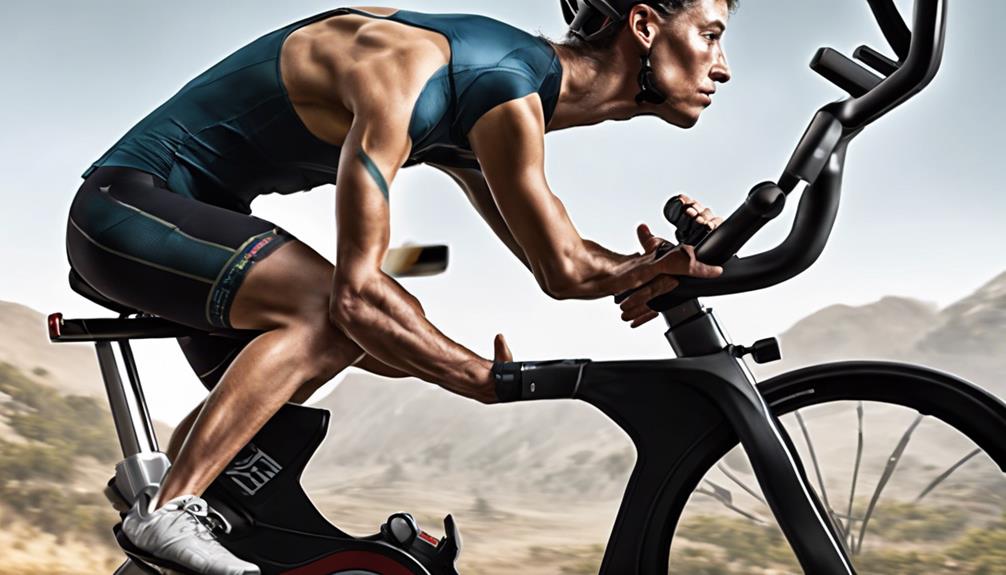
Increase the resistance on your indoor bike to replicate the challenge of climbing a hill and engage your leg muscles for an effective hill climb simulation during your spin workout. Here's how to conquer that virtual hill and push your limits:
- Focus on Your Leg Power: Channel your inner strength and power through each pedal stroke, imagining conquering a steep incline with determination.
- Maintain a Steady Cadence: Keep a consistent pace to build endurance and mimic the continuous effort required during a hill climb, feeling the burn in your muscles.
- Alternate Seated and Standing: Transition between sitting and standing positions to target different muscle groups, simulating the changing demands of a real hill climb. Embrace the challenge and embrace the burn, knowing that each push gets you closer to your peak performance.
Engage your mind, body, and spirit in this hill climb simulation, and witness the transformation in your cycling prowess. Embrace the burn and conquer the climb – you've got this!
Sprint Challenges

Let's ignite our cycling performance with exhilarating sprint challenges that elevate our intensity and boost our cardiovascular endurance. Sprint challenges are a fantastic way to push our limits, improve our fitness, and feel the rush of energy as we pedal towards our goals.
Start by incorporating short sprints of 20-30 seconds at a high resistance level to really challenge your muscles and cardiovascular system. Feel the burn, embrace the intensity, and watch as your strength and endurance grow.
As you progress, gradually increase the duration and intensity of your sprints to continue challenging yourself and breaking through plateaus. Using a heart rate monitor can help you track your effort and ensure you're pushing yourself to the max during these intense challenges.
Cool Down Session
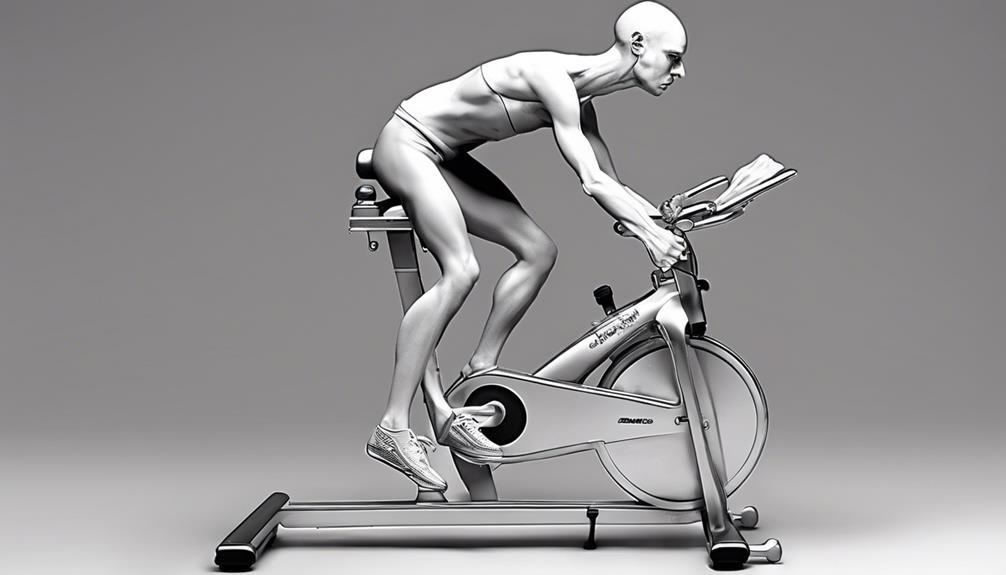
Let's remember that the cool down session is just as crucial as the workout itself. As we gradually decrease our pedaling intensity, we give our bodies the chance to recover and prevent stiffness.
Remember to focus on deep breathing, gentle stretching, and staying hydrated to maximize the benefits of your spin workout.
Stretching After Workout
After a vigorous spin workout, don't skip the crucial step of stretching to cool down your muscles and enhance recovery. Stretching post-workout is key to reducing muscle soreness and stiffness while improving flexibility and joint range of motion.
To maximize your cool down routine, focus on specific stretches targeting key muscle groups:
- Hamstrings: Extend one leg in front of you with a slight bend in the knee and lean forward from the hips.
- Quadriceps: Stand tall, bend one knee, and bring your foot towards your glutes, gently pulling on the ankle.
- Calves and Lower Back: Perform a standing calf stretch by stepping one foot back, keeping it straight, and pressing the heel into the ground.
Remember to breathe deeply and hold each stretch for 15-30 seconds to facilitate muscle relaxation and recovery.
Breathing Exercises for Relaxation
To enhance your recovery and promote relaxation after a spin workout, incorporate deep diaphragmatic breathing exercises focusing on slowing down your heart rate and releasing tension.
Inhale deeply through your nose, allowing your abdomen to expand, and exhale slowly through your mouth to release any lingering stress. Whether seated on your bike or a mat, concentrate on breathing out any remaining tension from your body.
By integrating mindful breathing techniques into your cool down routine, you can cultivate a sense of calm and mental clarity. These breathing exercises not only aid in reducing muscle soreness but also contribute to your overall well-being post-spin session.
Embrace the power of your breath to rejuvenate your body and mind after an intense workout.
Importance of Hydration
Staying properly hydrated after a spin workout is essential for replenishing lost fluids and supporting your body's recovery process. So, let's grab that water bottle and quench our bodies with the revitalizing power of hydration!
Here are three reasons why hydrating post-spin is a must:
- Hydration helps restore the fluid balance in our bodies, keeping us feeling refreshed and energized.
- Replenishing electrolytes lost through sweat aids in muscle recovery and prevents post-workout fatigue.
- Proper hydration supports overall muscle function, reducing the risk of cramps and helping us feel our best.
Tracking Progress
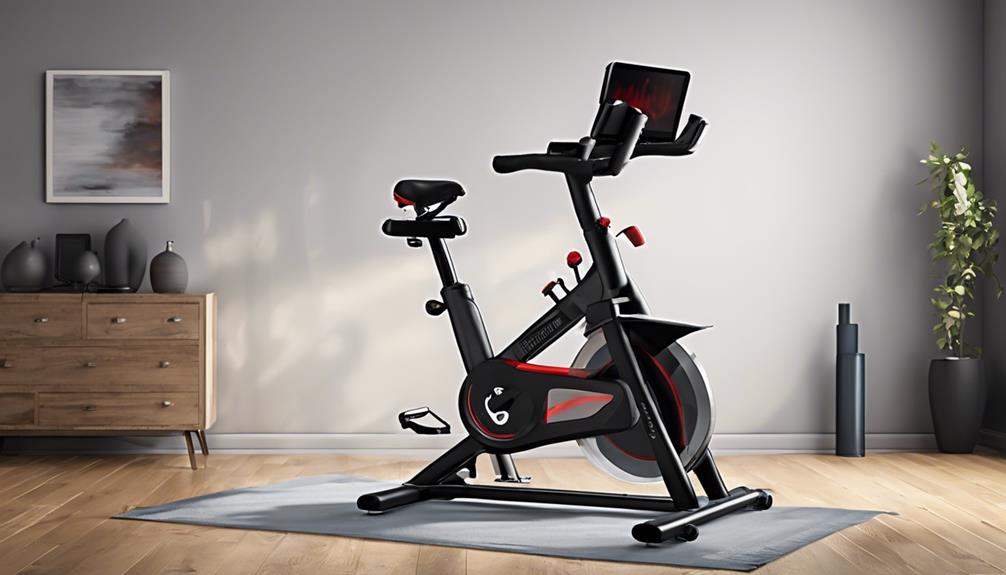
In our journey towards fitness and improvement, let's embrace the power of tracking progress during our spin workouts using reliable tools like fitness trackers or cycling apps. These devices allow us to monitor essential metrics such as distance covered, speed achieved, and calories burned, providing valuable insights into our performance. By recording workout duration and intensity levels, we can track improvements over time and set specific goals to measure progress effectively. Comparing current workout data with past sessions enables us to assess advancements in endurance, strength, and overall fitness, motivating us to push further.
Celebrate milestones like reaching new distance records or conquering challenging intervals to stay motivated and engaged with our spin workouts. Each achievement signifies progress and serves as a reminder of our dedication and hard work. Let's use these milestones as stepping stones towards our fitness goals, knowing that every pedal brings us closer to becoming the best version of ourselves. With each spin session, we've the freedom to challenge ourselves, track our progress, and ultimately transform our bodies and minds.
Frequently Asked Questions
How to Do a Spin Bike Workout?
Let's crush a spin bike workout! Adjust seat and resistance, follow the instructor's lead, engage core, focus on breathing, and cool down. These steps will maximize our efforts, boost endurance, and leave us feeling strong!
How Should I Position My Bike for Spinning?
Position your bike for spinning by adjusting the seat to hip bone height, aligning knees over pedals, and handlebars with the seat. Maintain a slight lean forward, relaxed grip, and engage core muscles for a powerful workout.
How Long Should a Beginner Use a Spin Bike?
Start with 15-30 min spin bike rides to build endurance. Increase to 45-60 min as you get stronger. Aim for 3-4 sessions weekly. Listen to your body, rest when needed. Consult pros for personalized plan.
How Do I Use My Bike as a Stationary Bike?
Let's transform our bike into a stationary bike for a challenging spin workout. Secure it on a trainer, adjust resistance to mimic terrains, track progress with sensors, and follow structured routines. Let's pedal to progress!
Conclusion
As we conclude our spin workout session, let's remember that consistency is key to seeing progress and reaching our fitness goals. By incorporating these 10 steps into our cycling routine, we can challenge ourselves, improve our endurance, and strengthen our bodies.
Let's continue to push ourselves, listen to our bodies, and strive for greatness with each spin workout. Remember, the only way to truly know the benefits of spin workouts is to experience them firsthand.
Let's keep spinning and achieving our best selves!
Olivia’s writing is not only informative but also inspiring. She has a knack for telling stories that capture the essence of cycling and the joy it brings to people’s lives. Her writing has been praised by readers and industry experts alike for its clarity, depth, and authenticity.
In addition to her writing, Olivia is also an avid cyclist. She enjoys exploring new trails and routes and has participated in several cycling events and races. Her first-hand experience with cycling gives her a unique perspective on the sport, reflected in her writing.
Overall, Olivia is a talented writer passionate about cycling and dedicated to producing high-quality content for FlatironBike. Her contributions to the magazine have helped make it a go-to source for cycling enthusiasts worldwide.
Beginners Guides
Mastering Bicycle Gear Use on Flat Roads
Uncover the secrets to mastering bicycle gear use on flat roads and revolutionize your cycling performance like never before.

Have you ever wondered if mastering the use of bicycle gears on flat roads could significantly improve your cycling performance? Understanding the intricate gear mechanisms and honing efficient gear changing techniques can truly elevate your riding experience.
But there's more to it than just shifting gears; optimal gear selection and cadence play crucial roles in maximizing your cycling efficiency.
Stay tuned to uncover valuable tips and tricks that will help you become a gear-shifting pro on flat terrains.
Key Takeaways
- Optimize gear ratios with front chainrings and rear cassette for efficient flat road cycling.
- Use precise gear changes to maintain a consistent cadence and power output.
- Avoid common gear mistakes like high gears and cross-chaining for improved performance.
- Experiment with different gear combinations to find the ideal balance of comfort and efficiency.
Gear Mechanism Basics
Exploring the intricacies of the gear mechanism on road bikes reveals the fundamental components that dictate pedaling efficiency and performance on flat terrain. The gear system comprises the front chainrings attached to the pedals and the rear cassette, with its array of cogs offering various resistance levels. The front chainrings play a pivotal role in major speed adjustments, while the rear cassette allows for subtle tweaks to optimize pedaling on flat roads.
When shifting the front chainring, cyclists experience notable gear ratio modifications, significantly impacting the required pedaling effort. On the other hand, adjusting the rear cassette with the appropriate lever enables riders to finely tune resistance levels for maximum efficiency on flat terrain. This manipulation of gears is crucial in maintaining an ideal cadence and power output, ensuring a smooth and effective riding experience.
Understanding the interplay between the chain, cassette, front, rear, lever, and cogs is essential for mastering gear utilization and enhancing cycling performance on flat roads. By grasping these gear mechanism basics, cyclists can unlock the full potential of their road bike and enjoy a liberating and empowering ride.
Efficient Gear Changing Techniques

When optimizing gear changes for flat road cycling, precision in adjusting the rear cassette with the right brake lever is key to maintaining pedaling efficiency and speed control. On flat roads, using the small lever located behind the right brake lever allows for easier and more efficient shifting of the rear gears. By utilizing the right brake lever along with the small lever, cyclists can fine-tune the gearing with their right hand, ensuring smooth gear changes and optimal pedaling efficiency.
Efficient gear changing techniques on flat roads involve utilizing the right lever for precise adjustments to the rear cassette. This method enables cyclists to make minor pedaling speed changes without compromising their momentum. By mastering the art of adjusting the rear gears with the right brake lever, riders can experience a comfortable and efficient cycling experience, where gear changes happen seamlessly, enhancing the overall enjoyment of the ride. Smooth gear changes are essential for maintaining a consistent cadence and achieving a balanced power output on flat terrains.
Optimal Gear Selection Tips
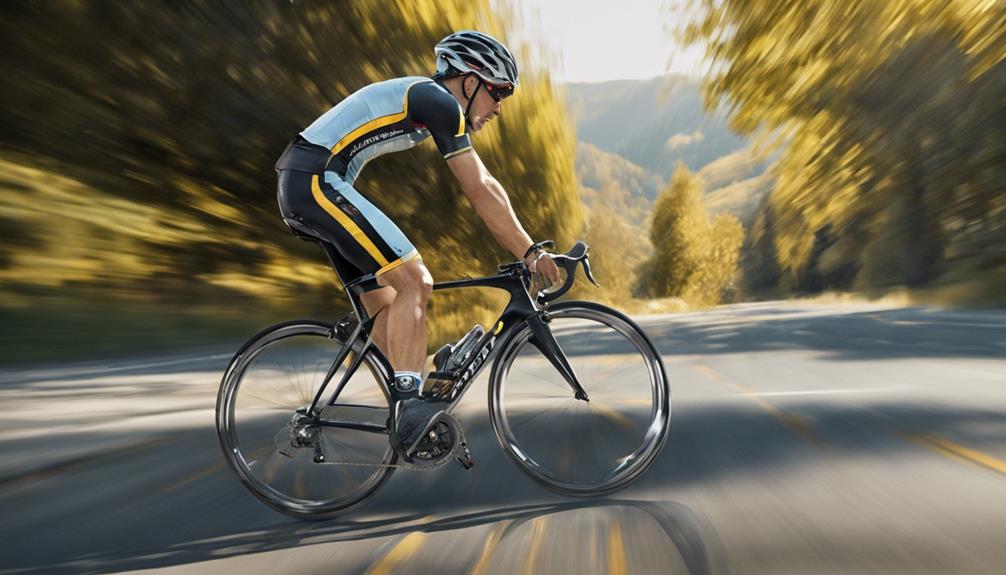
What gear ratios are most suitable for flat road cycling to ensure optimal performance and efficiency? When cycling on flat roads, it's essential to select the right gears to maximize your efficiency and enjoyment. Here are some tips to help you make the best gear selections:
- Choose the Right Crank: Opt for a standard crank if you're a strong rider looking for power on flat terrain, or consider a mid-compact crank for more versatility when encountering varied landscapes.
- Utilize Cassettes with Less Range: Optimal gear selection for flat roads involves using cassettes with a narrower range of gears. This setup allows for seamless transitions between gears, promoting a smoother riding experience.
- Select Appropriate Gear Combinations: Experiment with different gear combinations, including low, middle, and high gears, to find the ones that offer the best balance of comfort and efficiency on flat roads.
Avoiding Common Gear Mistakes
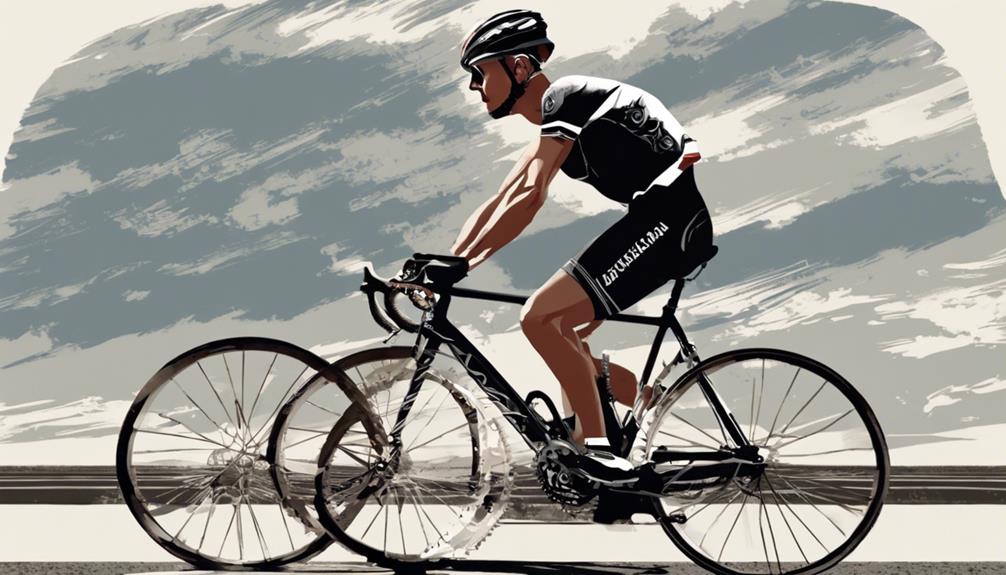
To optimize your performance and prevent strain on flat roads, it's important to avoid common gear mistakes. These include using high gears excessively, maintaining a moderate pace with middle gears, and steering clear of cross-chaining for smoother pedaling.
When cycling on flat terrain, avoiding high gears is crucial to prevent excessive strain on your muscles and joints. Instead, opt for a middle gear to sustain a comfortable pace while conserving energy. Cross-chaining, or using extreme gear combinations, should be avoided to ensure smooth pedaling motion and reduce the risk of gear wear.
Proper gear selection on flat roads is essential for efficiency and reducing fatigue. By utilizing the rear cogs for minor adjustments in gear ratio, you can optimize your cycling experience, enhance comfort, and enjoy a more pleasant ride. Remember, the right gear choice can make a significant difference in your overall performance on flat roads.
Improving Cycling Efficiency on Flats

Improving cycling efficiency on flat terrains requires precise gear selection tailored to the athlete's strength and terrain flexibility, ensuring optimal performance and comfort. When aiming for peak efficiency on flat road conditions, consider the following:
- Optimal Gear Selection: Choose between a standard crank for strong riders or a mid-compact crank for versatility in varied terrains, allowing for better adaptation to flat road conditions.
- Smooth Transitions: Opt for cassettes with narrower gear ratios to facilitate seamless gear changes, promoting smoother transitions and reducing disruptions in cadence on flat surfaces.
- Enhancing Pedaling Efficiency: Experiment with different gear combinations such as low, middle, and high gears to find the optimal balance between effort and speed, maximizing pedaling efficiency for improved cycling performance.
Frequently Asked Questions
What Gear for Flat Road Cycling?
For flat road cycling, we recommend selecting a gear that allows for efficient pedaling without excessive strain. Finding the right balance between resistance and cadence is key to enjoying a smooth and comfortable ride.
What Gear Do You Use to Ride a Flat Bike?
We ride flat roads in a middle gear for smooth pedaling and energy conservation. Choosing the right gear ratio prevents muscle strain and maintains a steady cadence. High gears cover more distance per pedal turn, enhancing performance.
How Do You Use Road Bike Gears Efficiently?
We maximize efficiency by smoothly shifting gears, maintaining cadence on flat roads. Our approach balances speed and power with mid-compact cranks, standard cranks for higher speeds, and narrower range cassettes. Modern drivetrains ensure seamless transitions for a steady ride.
Are Heavier Cyclists Faster on Flat?
We heavier cyclists may have an edge on flat roads thanks to increased momentum and power. The extra weight helps maintain speed and conquer wind resistance. Aerodynamics and power-to-weight ratio also matter, especially in time trials.
Conclusion
In conclusion, mastering bicycle gear use on flat roads is like finding the perfect rhythm in a symphony. Each gear change is a note played with precision, blending seamlessly to create a harmonious cycling experience.
By understanding the mechanics, practicing efficient techniques, and selecting optimal gears, cyclists can pedal with ease and grace. Just as a conductor directs an orchestra, mastering gear use allows us to control our ride with finesse and confidence.
Olivia’s writing is not only informative but also inspiring. She has a knack for telling stories that capture the essence of cycling and the joy it brings to people’s lives. Her writing has been praised by readers and industry experts alike for its clarity, depth, and authenticity.
In addition to her writing, Olivia is also an avid cyclist. She enjoys exploring new trails and routes and has participated in several cycling events and races. Her first-hand experience with cycling gives her a unique perspective on the sport, reflected in her writing.
Overall, Olivia is a talented writer passionate about cycling and dedicated to producing high-quality content for FlatironBike. Her contributions to the magazine have helped make it a go-to source for cycling enthusiasts worldwide.
Beginners Guides
7 Ways a Bicycle Is Useful to Us
Pedal into a world of possibilities with the incredible benefits a bicycle offers – from personal health to environmental impact.

Riding a bicycle is like unlocking a treasure chest of benefits waiting to be discovered. From boosting our physical health to reducing our carbon footprint, a bicycle is a versatile tool that offers more than meets the eye.
Let's explore the seven ways a bicycle can positively impact our lives and society as a whole.
Key Takeaways
- Improves physical health by enhancing fitness levels and strengthening muscles.
- Reduces environmental impact by cutting pollution and promoting sustainability.
- Saves money through cost-effective commuting and minimal maintenance costs.
- Enhances mental well-being by reducing stress, boosting brain function, and fostering social connections.
Health Benefits of Cycling
Cycling offers a myriad of health benefits, reducing the risk of various health conditions and improving overall fitness levels. Engaging in regular cycling serves as an excellent form of exercise that enhances cardiovascular fitness and muscle strength. This aerobic exercise not only aids in weight loss but also lowers the risk of stroke, heart attack, cancer, depression, diabetes, obesity, and arthritis. Just dedicating 2-4 hours per week to cycling can lead to significant health improvements, making it a time-efficient way to stay fit.
Additionally, the mental health benefits of cycling are noteworthy, as it provides a means to replace sedentary time with physical activity, promoting overall well-being. Even individuals with physical limitations can benefit from hand cycling, which offers cardiovascular and aerobic advantages for those with amputations, spinal injuries, or stroke recovery. Cycling truly embodies the essence of holistic health and vitality.
Environmental Friendliness
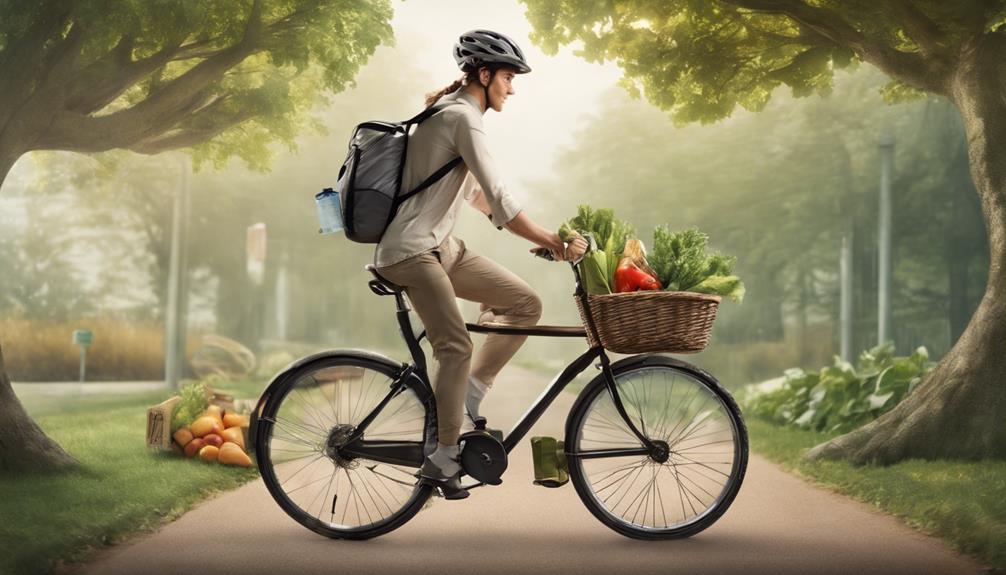
Bicycles, as an eco-friendly mode of transportation, play a crucial role in reducing pollution and promoting environmental sustainability. Riding a bike isn't only environmentally friendly but also offers numerous health benefits. Compared to vehicle passengers, cyclists inhale less pollution, contributing to better overall health. Commuting by bike significantly reduces the transportation carbon footprint by 67%, making it a sustainable choice for those concerned about environmental conservation.
In urban areas, where congestion and emissions are pressing issues, bikes provide a cleaner and healthier transportation option. By choosing to cycle instead of drive, individuals can actively help to reduce emissions and alleviate traffic congestion. Cycling not only benefits the individual rider but also contributes to a cleaner environment for all. Embracing bicycles as a means of transport is a step towards creating a more sustainable and eco-conscious society.
Cost-Effective Transportation Solution

Cycling offers an economic travel option for individuals seeking a budget-friendly commuting choice. By opting for a bicycle, we can enjoy an affordable way to travel that saves us money on fuel, insurance, and parking fees.
The minimal maintenance costs of bicycles compared to cars make them a cost-effective transportation solution for daily commuting needs.
Economic Travel Option
Embracing two-wheeled travel offers a budget-friendly and efficient way to navigate urban landscapes, saving on various transportation expenses. Cycling as an economic travel option not only helps in avoiding traffic congestion and parking expenses but also reduces the overall cost of commuting compared to owning a car. Bicycling serves as a cost-effective mode of transportation, cutting down expenses on fuel, registration, insurance, and maintenance. Furthermore, it promotes physical fitness, eliminating the need for costly gym memberships. By choosing bicycles for transportation, individuals can enjoy the built-in exercise benefits while minimizing travel costs.
| Benefits | Description |
|---|---|
| Cost-Effective | Saves money on fuel, registration, insurance, and maintenance. |
| Traffic Congestion | Helps in avoiding congested roads, leading to faster and more reliable travel. |
| Parking Expenses | Eliminates the need for expensive parking fees in urban areas. |
| Physical Fitness | Promotes health and wellness through regular physical activity. |
| Built-in Exercise Benefits | Provides exercise benefits while commuting, reducing the need for a separate gym membership. |
Budget-Friendly Commuting Choice
Navigating urban landscapes on two wheels presents a budget-friendly and efficient means of transportation, offering significant savings on various commuting expenses. Commuting by bike is a cost-effective option that helps individuals save money on fuel, maintenance, insurance, and registration fees.
Choosing a bicycle for commuting is an economical mode of transport, reducing overall transportation expenses and avoiding the high costs associated with car ownership. Cycling as transportation provides significant savings over time, making it a wise financial decision for those looking to cut down on commuting costs.
Affordable Way to Travel
When considering cost-effective transportation solutions, utilizing bicycles emerges as a practical and economical choice for travel. Cycling is an affordable way to travel, significantly reducing transportation costs compared to owning and maintaining a car. Here are some key points highlighting why cycling is a budget-friendly and practical option for travel:
- Bicycles are a cost-effective mode of transportation, saving money on fuel, registration, insurance, and maintenance.
- Using a bicycle for transportation helps avoid expenses associated with car ownership, making it a budget-friendly option.
- Bicycles provide an economical travel solution, minimizing the financial burden of fuel prices and maintenance fees.
- Choosing a bicycle for transportation is a practical and affordable option that contributes to overall cost savings.
Physical Fitness Improvement
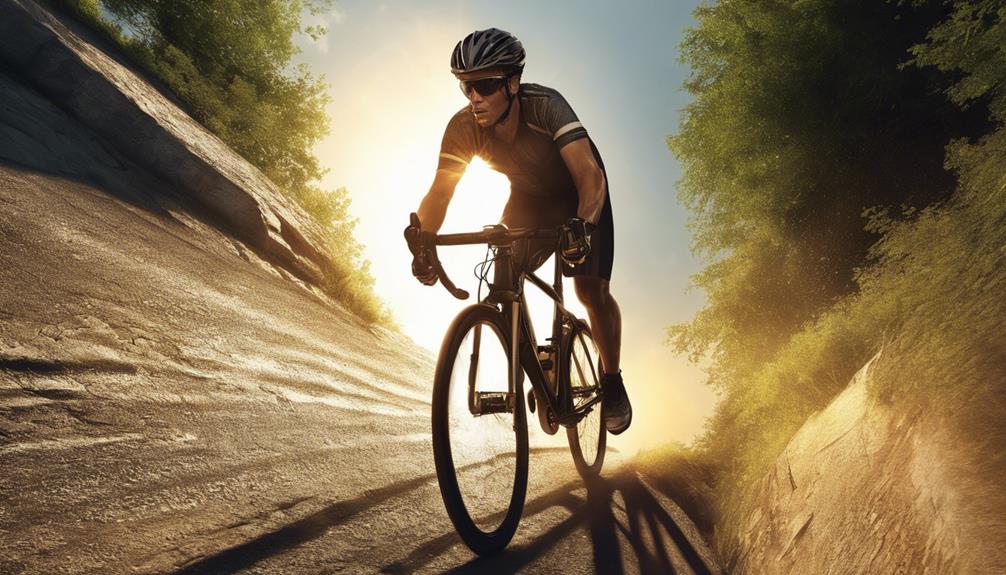
Cycling offers a substantial boost to our physical fitness levels by targeting key muscle groups and enhancing cardiovascular health. It's a low-impact exercise that strengthens the legs and improves balance, coordination, and posture.
Regular cycling sessions can help improve stamina, endurance, and overall cardiovascular function, making it a fantastic workout choice for individuals of all fitness levels.
Health Benefits
Improving physical fitness through cycling offers a range of benefits, including strengthening leg muscles, enhancing balance, posture, and coordination, and targeting key muscle groups such as quads, glutes, hamstrings, and calves.
Cycling is a low-impact exercise option that's gentle on the body and enhances cardiovascular function and overall fitness levels. It provides a time-efficient way to get fit and replace sedentary time with healthy exercise, benefiting individuals of all ages.
Regular cycling strengthens the cardiovascular system, enabling more exercise with less effort, and helps individuals achieve physical activity guidelines effectively. Adults cycling use 10 times more oxygen than sitting, promoting respiratory health by making the lungs work harder and delivering more oxygen where it's needed.
Cardiovascular Workout
Enhancing cardiovascular fitness through regular cycling contributes significantly to overall physical well-being and health. Cycling provides an effective cardiovascular workout, strengthening the heart, improving blood circulation, and lowering blood pressure.
By increasing heart rate, cycling helps improve cardiovascular fitness, reduce the risk of heart disease and stroke, and enhance endurance. This low-impact exercise is gentle on the joints while still offering a challenging workout.
Consistent cycling sessions lead to improved heart health, increased stamina, and enhanced physical fitness levels. Incorporating cycling into a routine not only benefits the heart but also contributes to overall well-being by boosting fitness and lowering the risks associated with a sedentary lifestyle.
Stress Reduction and Mental Wellbeing

Stress levels can be effectively reduced and mental well-being promoted through the scientifically proven benefits of cycling. Cycling isn't just a physical activity; it also has significant positive effects on mental health. Here are some key ways cycling contributes to stress reduction and mental well-being:
- Cycling releases endorphins, known as 'feel-good' hormones, which help reduce stress, anxiety, and depression.
- Regular cycling boosts brain function, enhances cognitive abilities, and improves overall mental health.
- Engaging in cycling stimulates blood flow to the brain, aiding in relaxation, focus, and concentration.
- Studies show that cycling is as effective as medication in reducing stress and promoting a positive mindset.
Community Connection and Social Interaction

Cycling not only promotes physical health but also nurtures a sense of community and encourages social interactions among individuals with shared interests. Riding a bicycle creates opportunities for community connection and social engagement through various avenues such as cycling clubs, group rides, and cycling events. Cyclists often come together to share their passion for biking, meet new people, make friends, and form lasting bonds.
| Community Connection | Social Interaction |
|---|---|
| Cycling clubs provide a platform for cyclists to engage with like-minded individuals. | Group rides offer a chance to connect with others while enjoying the thrill of cycling. |
| Community bike events, like charity rides or cycling festivals, foster an inclusive environment for cyclists. | Participating in cycling events allows cyclists to meet new people and form friendships based on their shared love for biking. |
In these settings, individuals find a supportive community that not only values their shared interest in cycling but also encourages social connections and interactions.
Sustainable and Green Lifestyle Choice

Choosing to ride a bicycle aligns with sustainable living practices and reduces our reliance on non-renewable resources. Bicycles are a sustainable transportation choice, producing zero emissions and reducing the carbon footprint. Opting for cycling helps create a greener environment by decreasing air pollution and harmful emissions. Cycling promotes a green lifestyle by minimizing the use of fossil fuels and contributing to cleaner air.
It's an eco-friendly mode of transport that supports the preservation of natural resources and aligns with sustainable living practices. By choosing bicycles over cars, we actively participate in reducing our carbon footprint and promoting green transportation. Embracing cycling as a sustainable and green lifestyle choice not only benefits our health but also plays a significant role in preserving the environment for future generations.
Let's pedal towards a more sustainable future together.
Frequently Asked Questions
What Can Bicycles Be Used For?
Bicycles can be used for commuting to work, school, or other destinations, reducing reliance on cars and public transportation. They are ideal for recreational purposes such as cycling tours, exploring nature trails, or participating in cycling events.
How Does the Bicycle Help Society?
Cycling weaves our urban tapestry with threads of health, community, and sustainability. Bicycles untangle traffic knots, paint green strokes on carbon clouds, and pedal us into a brighter, closer-knit future.
How Was the Bicycle Important?
The bicycle was crucial throughout history, revolutionizing transportation, empowering women, boosting economies, and promoting public health. Its impact continues to be felt worldwide, providing reliable transport and fostering physical activity, making it a truly enduring invention.
How Do Bikes Help the Environment?
Cycling, like a green breeze, helps the environment by reducing carbon emissions and air pollution. Bicycles are a sustainable transportation choice, cutting down our carbon footprint significantly compared to driving, contributing to cleaner air quality.
Conclusion
In conclusion, cycling offers a multitude of benefits for our health, the environment, and our wallets.
Did you know that cycling just 20 miles a week can reduce the risk of heart disease by 50%?
With its ability to improve physical fitness, mental well-being, and community connections, biking is truly a valuable and enjoyable way to stay healthy and happy.
So grab your helmet and hit the road for a sustainable and rewarding lifestyle choice!
Olivia’s writing is not only informative but also inspiring. She has a knack for telling stories that capture the essence of cycling and the joy it brings to people’s lives. Her writing has been praised by readers and industry experts alike for its clarity, depth, and authenticity.
In addition to her writing, Olivia is also an avid cyclist. She enjoys exploring new trails and routes and has participated in several cycling events and races. Her first-hand experience with cycling gives her a unique perspective on the sport, reflected in her writing.
Overall, Olivia is a talented writer passionate about cycling and dedicated to producing high-quality content for FlatironBike. Her contributions to the magazine have helped make it a go-to source for cycling enthusiasts worldwide.
Beginners Guides
What Are the Basics of How a Bicycle Freewheel Works?
Leveraging intricate mechanisms, bicycle freewheels allow wheels to spin freely—discover the fascinating basics and functions behind this essential component.

When we hop on our bicycles, we often take for granted the intricate workings of the freewheel in the rear hub. Did you know that the freewheel plays a vital role in allowing the wheel to rotate independently of the pedals?
Understanding the mechanisms behind how a bicycle freewheel operates can provide valuable insight into the smooth functioning of this essential component. Let's explore the inner workings of different types of freewheels and uncover the basics of their functionality to gain a deeper appreciation for this often overlooked yet crucial part of our bikes.
Key Takeaways
- Pawls and ratchets enable torque transmission and wheel movement.
- Ratchet and pawl mechanism ensures smooth power transfer and rider flexibility.
- Star ratchet freewheels offer robust construction and reliability on challenging terrains.
- Roller freewheels use ball bearing design for durability and smooth operation.
Components of a Bicycle Freewheel
In a bicycle freewheel, the components responsible for transmitting torque and facilitating forward pedaling are the pawls and ratchets. The ratchet and pawl system in the freewheel is integral to its function.
The pawls, small spring-loaded components, engage with the ratchet's teeth to allow the wheel to turn when the pedals are in use. This interaction forms the basis of the drive system, enabling the transfer of power from the rider's pedaling to the wheel.
The star ratchet design within the freewheel ensures that the pedals remain stationary when the wheel is spinning freely, preventing any unwanted backward rotation. When coasting or not pedaling, the pawls disengage from the ratchet, allowing the wheel to rotate independently without resistance.
This intricate mechanism of pawls and ratchets in the freewheel guarantees a smooth and efficient forward motion while offering the rider the freedom to pedal without constraint.
Ratchet and Pawl Mechanism Explained

Exploring the inner workings of a bicycle freewheel reveals the intricate and efficient system known as the ratchet and pawl mechanism. This mechanism plays a crucial role in enabling torque transmission and facilitating the forward movement of the bicycle.
Here's a breakdown of its key components:
- Ratchet and Pawl Interaction: The pawls engage with the teeth on the ratchet, allowing the wheel to move forward when the pedals are in motion.
- Disengagement for Free Movement: When the pedals are reversed, the pawls disengage from the ratchet, enabling free movement without propulsion.
- Spring Mechanism for Torque Transmission: A spring mechanism within the system ensures that the pawls engage effectively with the ratchet to transmit torque seamlessly.
- Audible Click Feature: The characteristic click sound heard when reversing pedals signifies the engagement and disengagement of the pawls with the ratchet.
This precise and reliable design ensures that the bicycle freewheel operates smoothly, providing efficient power transfer while maintaining the flexibility and freedom desired by cyclists.
Understanding Star Ratchet Freewheels

Amid the realm of bicycle freewheel mechanisms, star ratchet freewheels stand out for their robust construction and enhanced durability. Consisting of two toothed discs with slanted teeth pressed together by a spring during pedaling, these freewheels excel in demanding riding conditions like freeride and downhill.
When idling, the toothed discs in star ratchet freewheels move against each other, creating a characteristic noise that provides riders with distinct auditory feedback. This noise is a result of the discs moving against each other, signifying the reliability and durability of this freewheel mechanism.
The robust nature of star ratchet freewheels makes them a preferred choice for riders tackling challenging terrains, especially when going downhill. The enhanced durability of these freewheels ensures that riders can trust their rear wheel's performance even in the most demanding situations, offering a sense of freedom and confidence while riding.
Inner Workings of Roller Freewheels

Utilizing pinch rollers that are pressed against the hub during pedaling, roller freewheels propel the bicycle forward with efficiency and minimal noise. The inner workings of roller freewheels involve a sophisticated design that ensures seamless functionality.
Here's a closer look at how roller freewheels operate:
- Pinch Roller Mechanism: Pinch rollers are key components that make direct contact with the rear sprocket, transferring power efficiently during pedaling.
- Guide Tracks: These rollers move freely within guide tracks when coasting, resulting in a noiseless riding experience.
- Ball Bearing Design: Similar to ball bearings, roller freewheels are designed for smooth and quiet operation, enhancing the overall riding experience.
- Durability and Reliability: Roller freewheels are renowned for their durability and long service life, making them a dependable choice for riders seeking a silent ride.
The meticulous engineering behind roller freewheels ensures smooth engagement under load and quiet operation while coasting, offering riders the freedom to enjoy a peaceful cycling experience.
Functionality of Sprag Clutch Freewheels
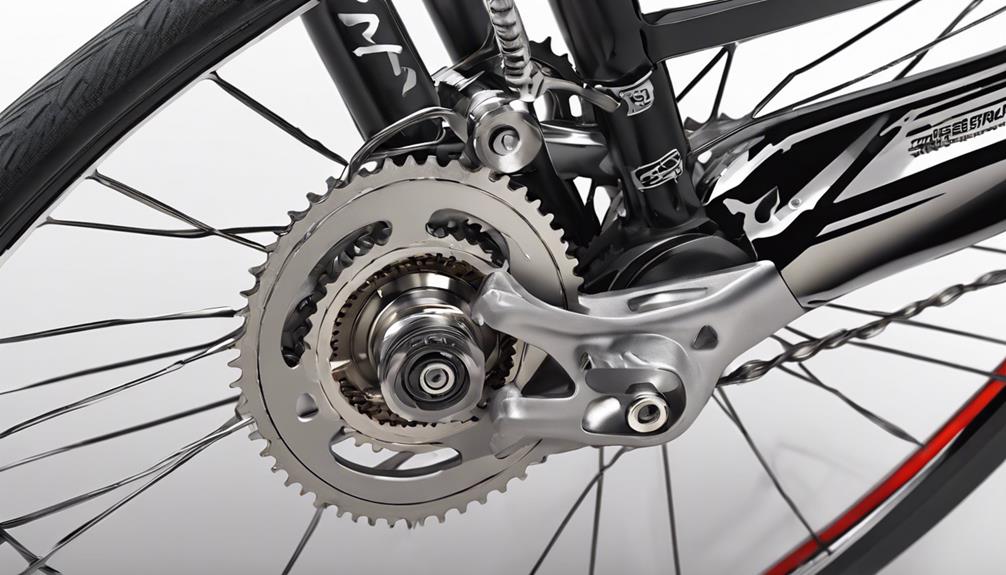
Sprag clutch freewheels employ sprags to facilitate torque transmission within bicycles, ensuring efficient power transfer. When the cyclist stops pedaling, the sprags disengage, allowing the wheel to spin freely without moving the pedals. The design of sprag clutch freewheels enables smooth engagement and disengagement, leading to efficient power transfer when pedaling resumes. The instant engagement of the sprags ensures quick and responsive power delivery, enhancing the overall riding experience.
Due to their simple yet effective design, sprag clutch freewheels require minimal maintenance. Cyclists can enjoy reliable performance in various riding conditions without the need for frequent adjustments or repairs. The durability and functionality of sprag clutch mechanisms make them a popular choice among cyclists seeking consistent and hassle-free operation. Whether navigating city streets or tackling rugged terrains, sprag clutch freewheels provide the necessary torque transmission for a smooth and enjoyable ride.
Frequently Asked Questions
How Does a Bicycle Freewheel Work?
We know how a bicycle freewheel works. It allows pedals to rotate independently from the rear wheel, ensuring smooth coasting. The mechanism engages during forward pedaling and disengages when coasting or backpedaling, playing a vital role in efficient cycling.
What Is the Principle of Freewheel?
Freewheeling is akin to a river flowing, allowing us to move forward effortlessly. The principle of a freewheel is to enable coasting by disconnecting pedals from the wheel, granting us the freedom to control our speed effortlessly.
What Is the Free Wheeling Technique?
Freewheeling technique on a bicycle involves coasting without pedaling, allowing riders to conserve energy and maintain momentum. It's crucial for controlling speed and balance during descents, enhancing the overall riding experience.
What Is the Difference Between a Freewheel and a Freehub?
We differentiate between a freewheel and a freehub by their attachment methods to the hub and compatibility with sprocket configurations. Freewheels thread onto hubs with a lockring, while freehubs use a splined interface for cassettes, offering more versatility.
Conclusion
In conclusion, the bicycle freewheel is a marvel of engineering, allowing for seamless transmission of power while enabling the wheel to rotate independently of the pedals.
Its intricate mechanisms, such as the ratchet and pawl, star ratchet, roller, and sprag clutch, work in harmony to provide cyclists with a smooth and efficient riding experience.
The freewheel is like a symphony of precision, orchestrating the dance between pedal power and wheel rotation with unparalleled grace and finesse.
Olivia’s writing is not only informative but also inspiring. She has a knack for telling stories that capture the essence of cycling and the joy it brings to people’s lives. Her writing has been praised by readers and industry experts alike for its clarity, depth, and authenticity.
In addition to her writing, Olivia is also an avid cyclist. She enjoys exploring new trails and routes and has participated in several cycling events and races. Her first-hand experience with cycling gives her a unique perspective on the sport, reflected in her writing.
Overall, Olivia is a talented writer passionate about cycling and dedicated to producing high-quality content for FlatironBike. Her contributions to the magazine have helped make it a go-to source for cycling enthusiasts worldwide.
-

 Electric Bike3 months ago
Electric Bike3 months agoHow To Turn Your Bike Into An Electric Generator
-

 Bike2 months ago
Bike2 months agoAdvantages and Disadvantages of a Carbon Fiber Bike Frame
-

 Beginners Guides2 months ago
Beginners Guides2 months agoA Guide to Right Hybrid Bike Posture: How to Sit on the Bike for Optimal Performance
-
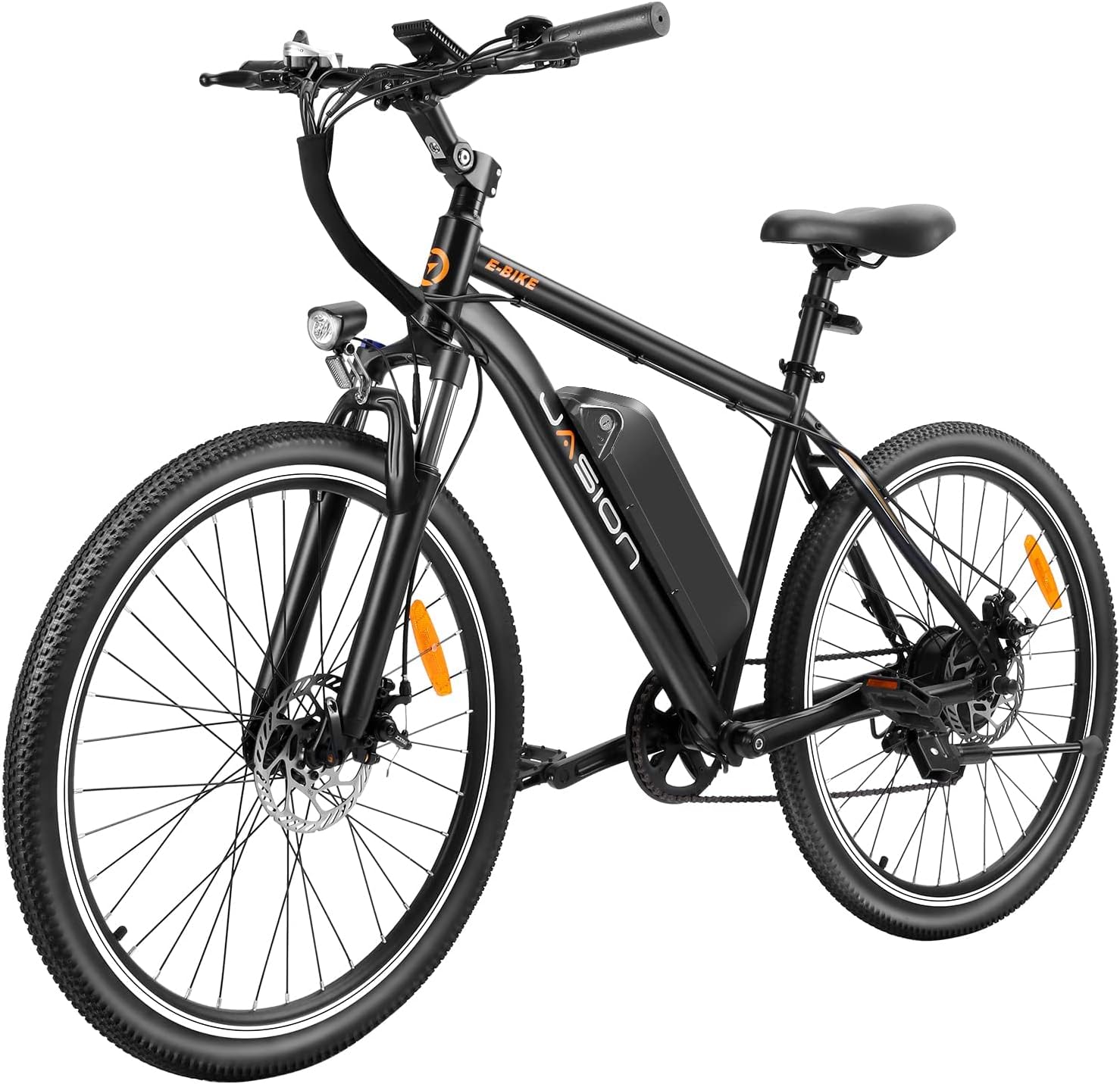
 Vetted3 months ago
Vetted3 months agoJasion EB5 Electric Bike Review: Commute Mountain Bike for Adults
-

 Vetted2 months ago
Vetted2 months ago12 Best Men's Cycling Bib Shorts for Comfort and Performance – Reviewed & Rated
-
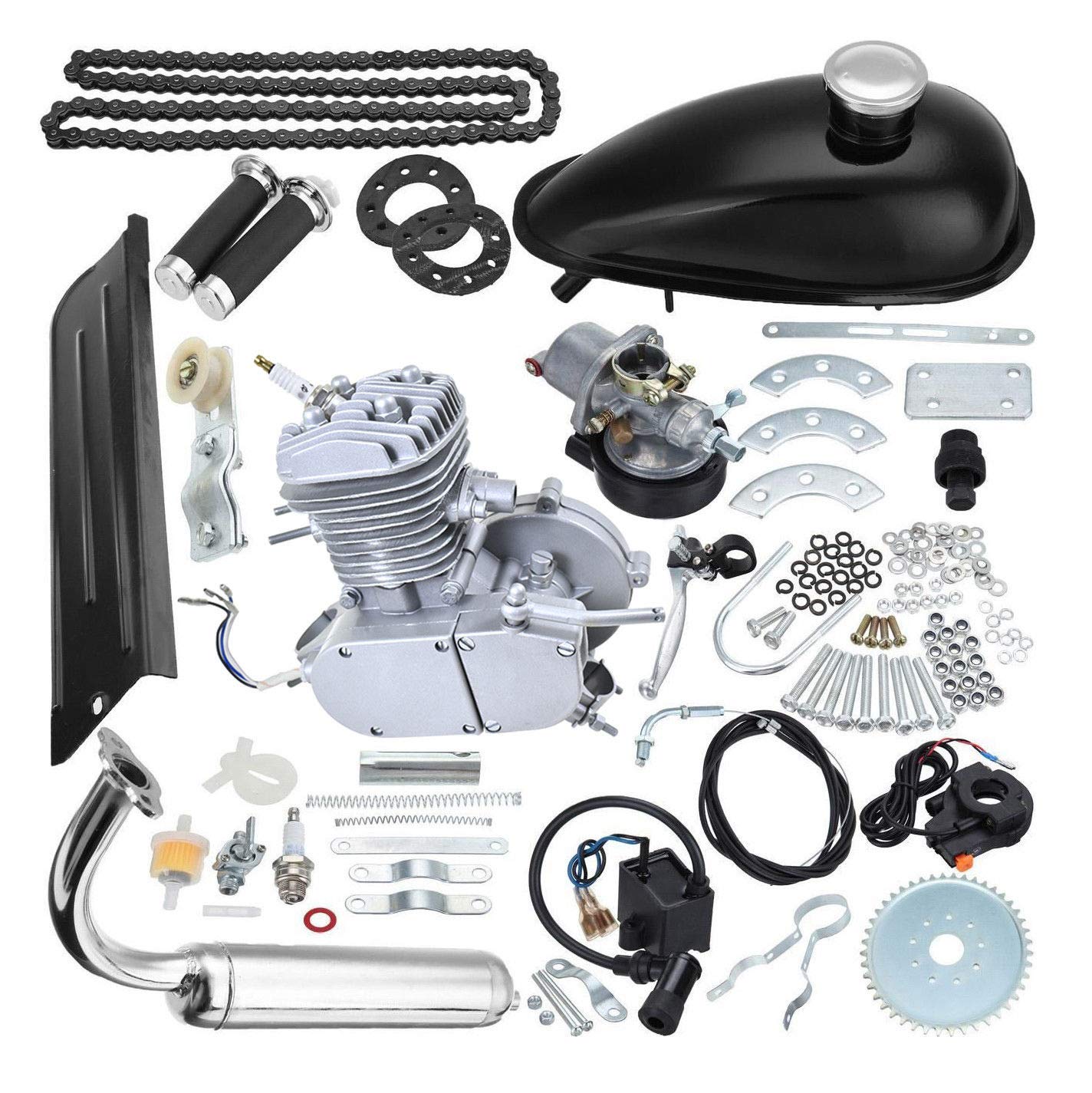
 Vetted3 months ago
Vetted3 months agoReview: 80CC Motorized Bicycle Gas Engine Kit with Performance Carburetor
-

 Vetted2 months ago
Vetted2 months ago15 Best Fixed Gear Bikes for Urban Commuting and Stylish Riding
-

 Beginners Guides2 months ago
Beginners Guides2 months agoWhere Are KTM Motorcycles Made?






